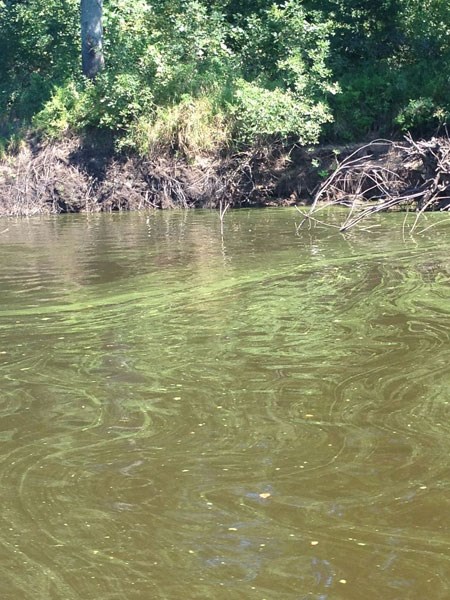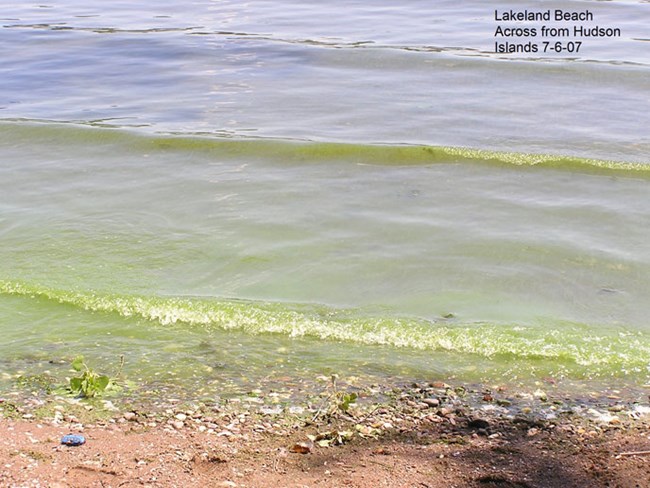
Chauncey Anderson Algal Blooms Have you ever seen parts of your favorite lake or river turn into pea soup during the summer? Or maybe it looks like a can of green paint spilled? When temperatures climb, conditions are ripe for algae blooms to form on lakes or slow moving portions of rivers. Why do the blooms form? Blooms thrive in shallow, warm, non-moving bodies of water. High levels of nutrients like nitrogen and phosphorous, warm water temperatures and high light levels - or a combination of all three factors - may stimulate the rapid reproduction of algae until it dominates the local aquatic ecosystem, forming an algal bloom. Blooms vary in appearance and can appear as foam, scum, or mats on the surface of the water. These blooms may manifest in a variety of colors, including blue-green, bright green, brown, or red. While not common on the main channel, algal blooms do occur on the lower St. Croix River and Lake St. Croix, especially from late summer to mid-fall. Typically these algae remain suspended in the water column, but surface scums have been reported from some locations. How can I help prevent harmful algal blooms?
Tips for staying safe
What are the symptoms of exposure to a harmful algal bloom?People can experience numbness of lips, tingling in fingers and toes, dizziness, headache, rash or skin irritation, abdominal pain, diarrhea, and vomiting.

Molly Shodeen More information on blue-green algae, how to determine if you have blue-green algae, and how to report a possible human or animal illness, is available on the Minnesota Pollution Control Agency Harmful Algal Blooms website. |
Last updated: September 7, 2021
